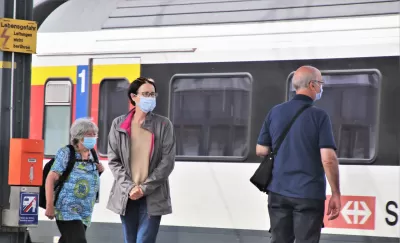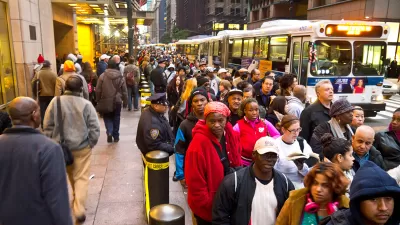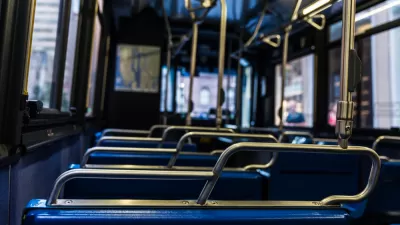Almost a year into the devastating effects of the COVID-19 pandemic, the Urban Institute assesses what we've learned about transportation equity—and what these lessons mean for the future.

In a recent webinar hosted by the Urban Institute, a panel of city and community leaders discussed transportation equity and the barriers and opportunities highlighted by the pandemic. While transit agencies across the country have made steep service cuts, it has become painfully obvious that the people most hurt by reduced service are the essential workers—many low-income and BIPOC—who rely on public transit for their livelihood. Transit cuts also hurt the elderly and people with disabilities, who face increased barriers in finding safe, accessible, and affordable transportation. The panelists agreed that disinvestment in public transit is shortsighted and dangerous, as rolling back the budget cuts will be difficult to do later. After the pandemic, communities will need long-term plans for improved commutes and safe, accessible transit.
Christina Plerhoples Stacy and Christopher Davis highlight the four main lessons that emerged from the discussion. The webinar presented the Institute's new transportation equity data tool and hosted a panel discussion about potential solutions to transportation inequities. The big takeaways:
- Prioritizing roads and highways over public transit perpetuates the negative impacts of structurally racist policies.
- Reducing funding for equitable transportation directly affects essential workers, who depend on public transit more than other groups.
- Funding structures affect how equitable transit systems are.
- Early community engagement matters for planning and implementing policies that provide services to underserved communities.
FULL STORY: Four Lessons for Cities to Help Advance Equitable Transportation during the COVID-19 Pandemic and Beyond

Planetizen Federal Action Tracker
A weekly monitor of how Trump’s orders and actions are impacting planners and planning in America.

San Francisco's School District Spent $105M To Build Affordable Housing for Teachers — And That's Just the Beginning
SFUSD joins a growing list of school districts using their land holdings to address housing affordability challenges faced by their own employees.

The Tiny, Adorable $7,000 Car Turning Japan Onto EVs
The single seat Mibot charges from a regular plug as quickly as an iPad, and is about half the price of an average EV.

Seattle's Plan for Adopting Driverless Cars
Equity, safety, accessibility and affordability are front of mind as the city prepares for robotaxis and other autonomous vehicles.

As Trump Phases Out FEMA, Is It Time to Flee the Floodplains?
With less federal funding available for disaster relief efforts, the need to relocate at-risk communities is more urgent than ever.

With Protected Lanes, 460% More People Commute by Bike
For those needing more ammo, more data proving what we already knew is here.
Urban Design for Planners 1: Software Tools
This six-course series explores essential urban design concepts using open source software and equips planners with the tools they need to participate fully in the urban design process.
Planning for Universal Design
Learn the tools for implementing Universal Design in planning regulations.
Smith Gee Studio
City of Charlotte
City of Camden Redevelopment Agency
City of Astoria
Transportation Research & Education Center (TREC) at Portland State University
US High Speed Rail Association
City of Camden Redevelopment Agency
Municipality of Princeton (NJ)





























